Best portable power stations 2025: stay charged anywhere
Stay powered up wherever you go with the best portable power stations
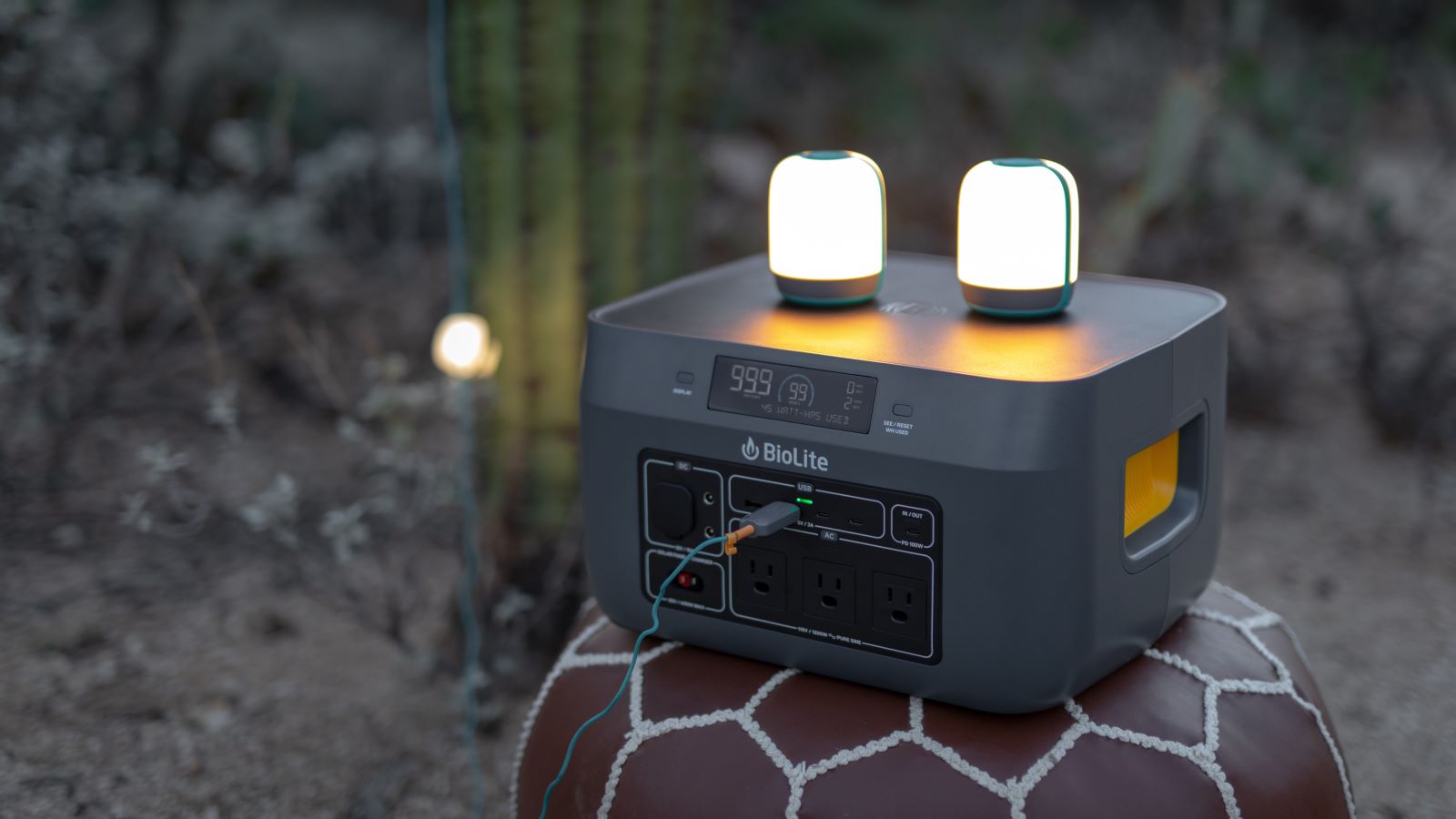

Jamie Carter
What makes the best portable power station? More robust than power banks, which can recharge smaller devices quickly, mobile power stations offer a whole lot more power for emergencies and off-grid adventures.
Portable power stations have become essential for modern adventurers, remote workers, and anyone looking to prepare for unexpected power outages.
With features like multiple charging ports, solar compatibility, and the ability to power everything from laptops to mini fridges, these devices are versatile lifesavers.
Our current favourite is the EcoFlow River 3 UPS, a compact power station that punches well above its weight. If you like spending time in your van or caravan off-grid, your best bet is the Anker Solix C1000. In between the two, you'll find the DJI Power 500 from the popular drone manufacturer.
Black Friday portable power station deals in 2025: what you need to know
There are only three things sure in life: death, taxes, and that there will be deep discounts on portable power stations on Black Friday.
In 2025, we expect to see heavy markdowns across some of the most popular models from the past year, including the EcoFlow Delta 2, Jackery Explorer 1000 V2, and Anker SOLIX C1000X. Smaller, more portable units like the EcoFlow River 2 Max and Bluetti AC2P are also likely to feature in early flash sales.
From campsite comforts to emergency preparedness, 2025’s Black Friday sales are shaping up to deliver serious power for less.
Top 3

The EcoFlow River 3 UPS is a compact portable power station with a 245Wh capacity and 300W continuous output, peaking at 600W with X-Boost. It features multiple ports and a clear LCD display. It supports solar panel integration and offers UPS functionality with fast switchover for home backup.
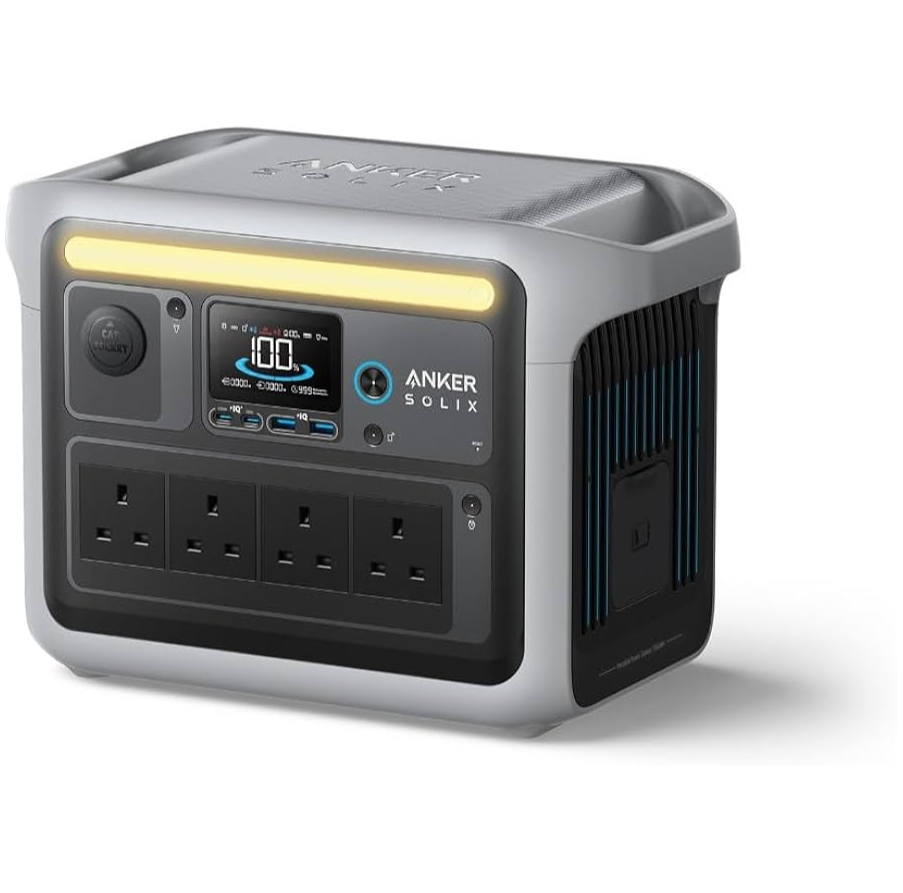
The Anker Solix C1000 is the best power station with a 1056Wh capacity and 1800W max output, featuring multiple ports, including USB-C and AC outlets, supports rapid charging in under an hour, and is ideal for camping and more.
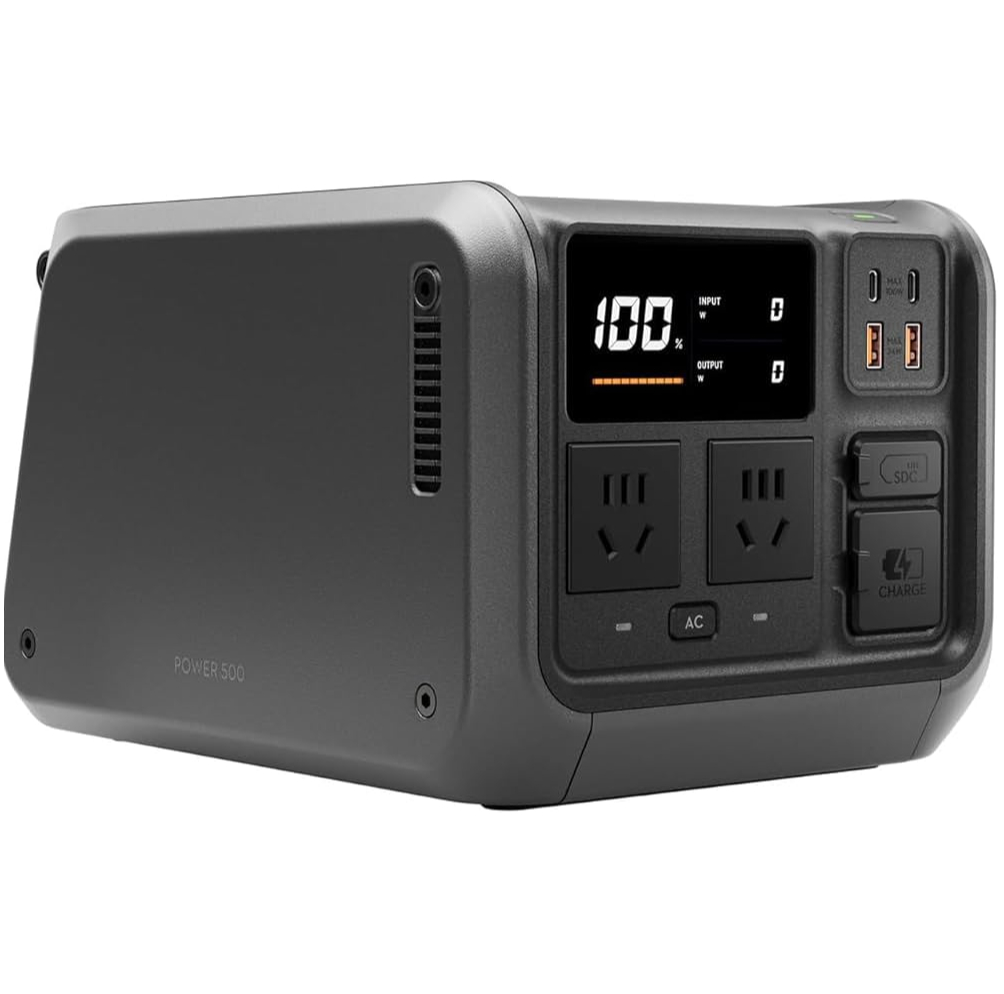
The DJI Power 500 is a compact, portable power station ideal for travellers and digital nomads. It offers 512Wh capacity, multiple ports, and fast charging, perfect for charging DJI drones and various devices.
Best overall
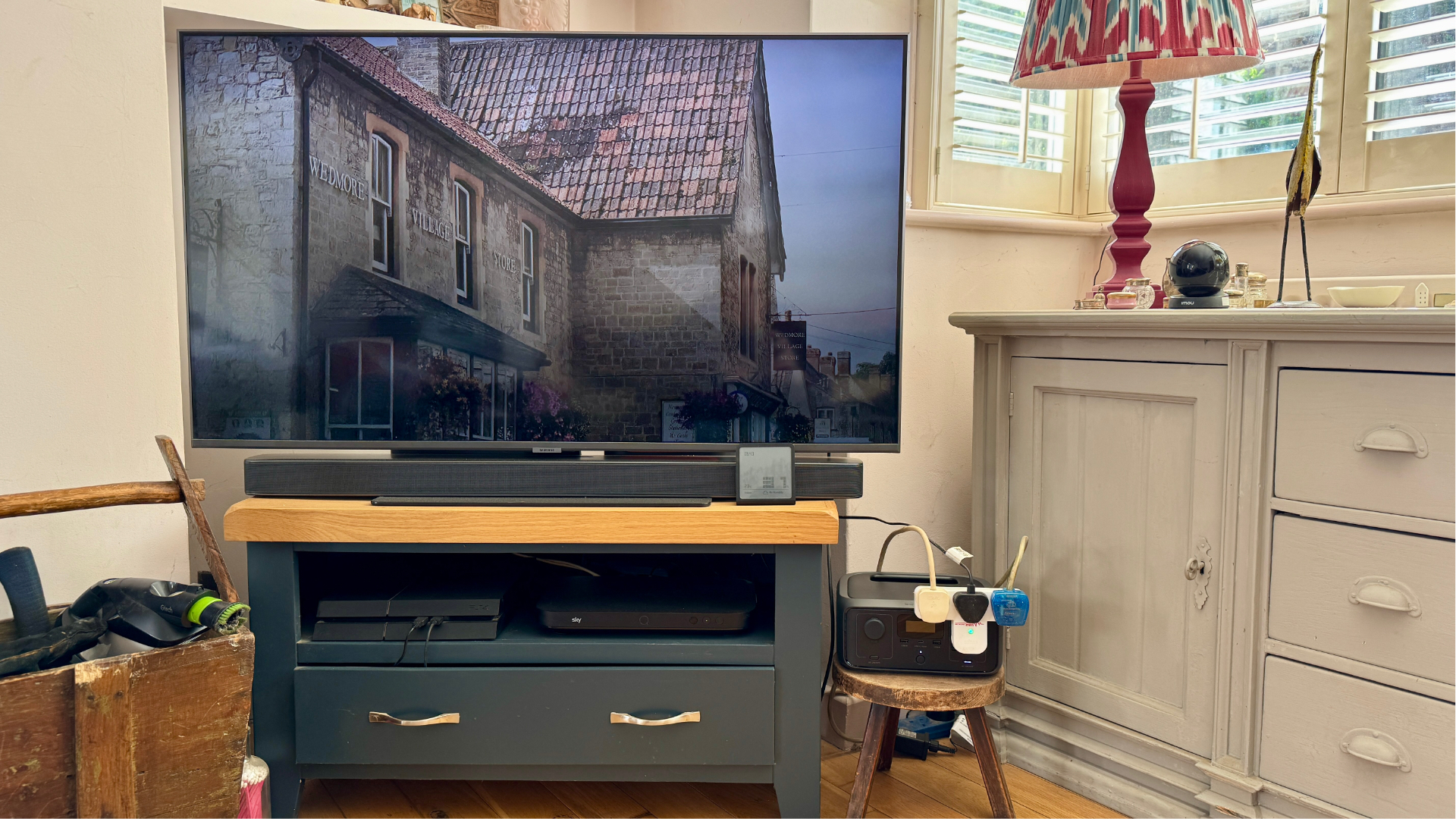

Specifications
Reasons to buy
Reasons to avoid
The EcoFlow River 3 UPS is the best overall portable power station, thanks to its clever balance of portability, power, and versatility. Weighing just 3.55kg, it’s small enough to take anywhere yet powerful enough to cover a wide range of needs, from camping trips to home office backup.
What really sets the River 3 apart is how EcoFlow has downscaled the best features of larger units without compromise. It delivers a 245Wh capacity and 300W output (boostable to 600W), handling everything from laptops and tablets to routers and even small appliances. Its UPS function ensures an almost instant switchover during power cuts, making it ideal for safeguarding essential home devices like Wi-Fi hubs, laptops or monitors.
Charging is a major strength here: it can go from empty to 100% in around an hour and supports solar charging with an optional 45W panel, offering flexibility for off-grid adventures. The sleek, minimal design and low centre of gravity make it stable and easy to use in any setting.
If you're looking for a no-compromise, everyday-ready power station that blends portability with performance, the EcoFlow River 3 UPS is the obvious choice.
Read our full EcoFlow River 3 UPS review.
Best for caravanning
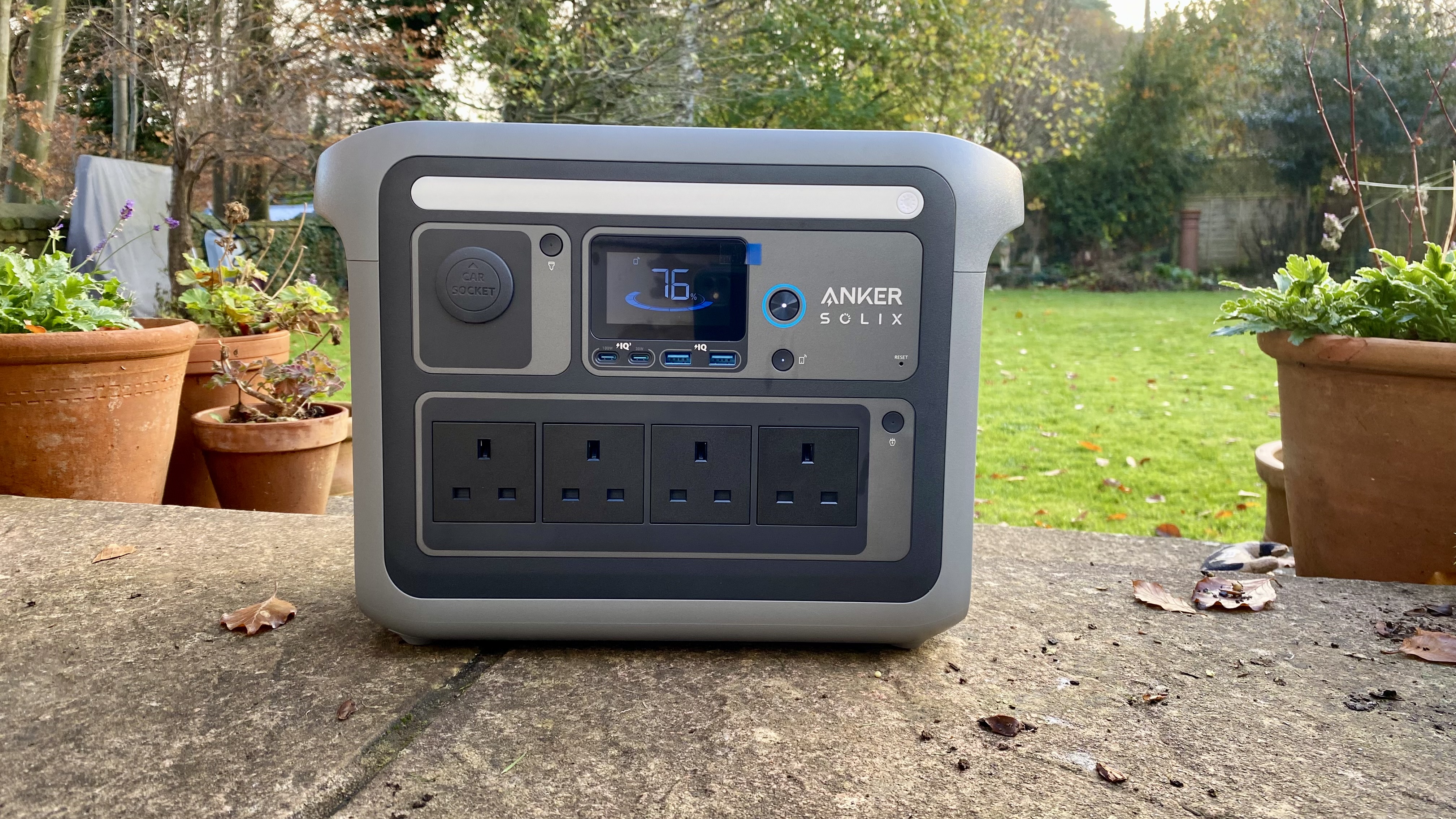
Specifications
Reasons to buy
Reasons to avoid
The new 1,056 watt-hour Anker Solix C1000 portable power station is a muscular thoroughbred that trounces most of the opposition by dint of its battery capacity, maximum wattage and sheer number of outputs. If you’re into off-grid car camping, caravanning, motor homing or live in a rural area where power cuts are a fact of life, this potent power supplier is currently one of the very best models money can buy.
If you’re scouring the market for a relatively lightweight and small portable power station that packs a mighty punch in practically all disciplines, the Anker Solix C1000 is an absolute shoo-in. It’s easy to use, not too heavy given the weight of batteries in general, and it performs more reliably than some electricity companies I know. Top choice.
Read our full Anker Solix C1000 review.
Best compact
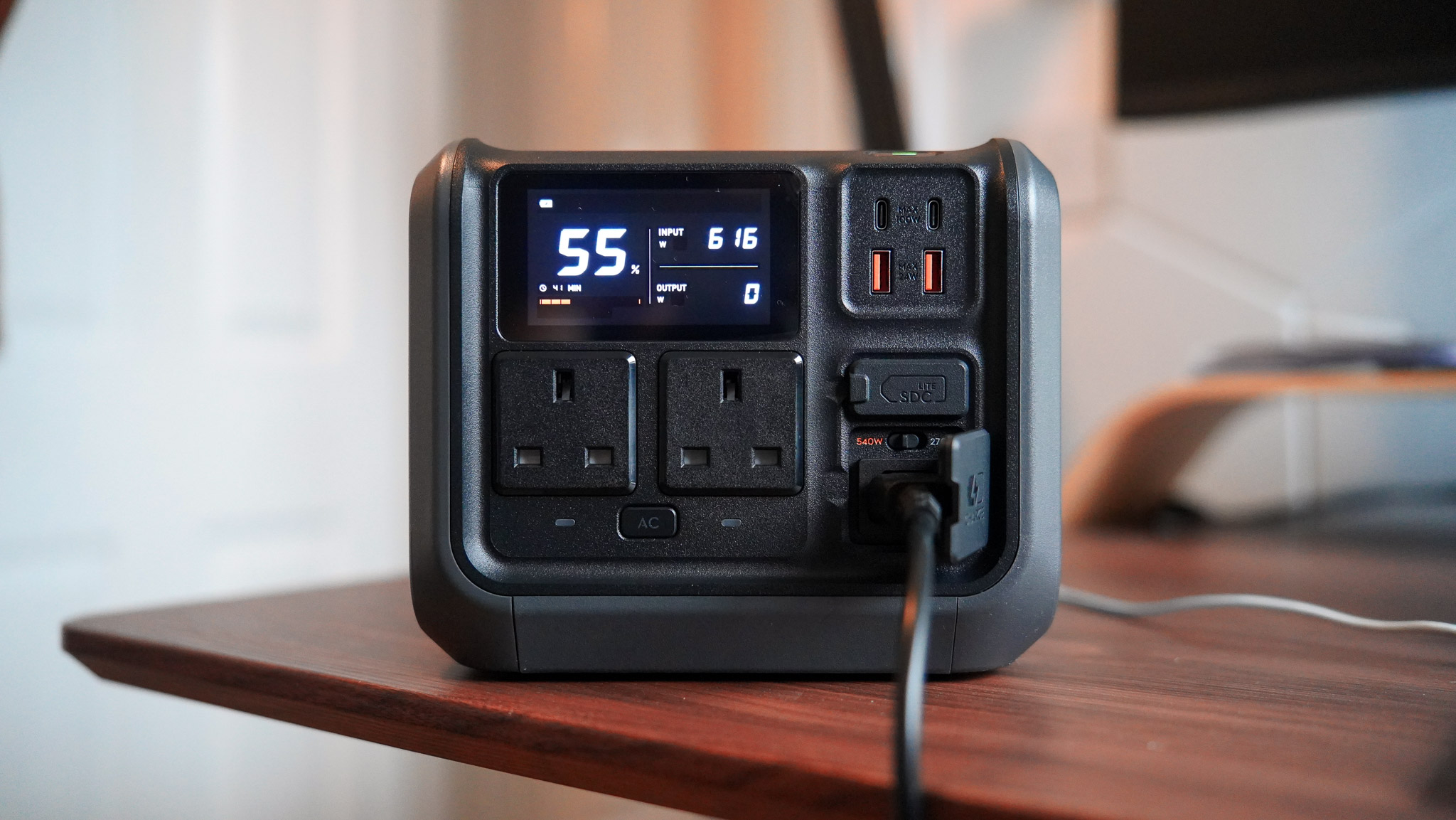
Specifications
Reasons to buy
Reasons to avoid
The DJI Power 500, launched in April 2024, offers a compact and efficient solution for on-the-go power needs. Weighing just 7.3 kg, it is significantly lighter than many competitors, such as the BioLite BaseCharge 1500 and Dabbsson DBS2300. Its robust build quality and multiple ports, including a unique SDC Lite port for rapid DJI drone charging, make it an ideal choice for drone enthusiasts and content creators.
The power station features a 512 Wh capacity, a maximum power output of 1,000 W, and a fast charge time of 70 minutes, providing reliable power for various devices. While it does not include wireless charging and is more tailored for creative professionals than home emergencies, its quiet operation (25dB), easy-to-read LED display, and high portability make it a valuable investment.
Read our full DJI Power 500 review.
Best for home emergencies

Specifications
Reasons to buy
Reasons to avoid
The BaseCharge 1500 unit is user-friendly, and despite not being weatherproof or particularly rugged, it can be used at home and on camping trips as long as you can store it somewhere without getting wet. It's light enough to be hauled around easily, and we love the clearly-displayed information on the LCD Smart Dashboard.
At 26.5 lbs (12kg), it's not terribly heavy, and it comes with two decent-sized handle holes, making it pretty easy to carry the unit around (it measures 14.4 x 12.2 x 8.2 inches). There are plenty of ports allowing you to charge multiple devices simultaneously; however, this might trigger the cooling fans, which are pretty loud. They make a whirring noise similar to small drone propellers. It's not massively annoying, but it's certainly audible.
During testing, we ran our 800W vacuum of it while charging our smartphone via the wireless port, and the BaseCharge 1500 didn't even blink an eye. We charged three drones, one drone controller and a laptop on another occasion, which also seemed acceptable. An exemplary portable power station overall!
Read our full Biolite Basecharge 1500 review.
Best water-resistant
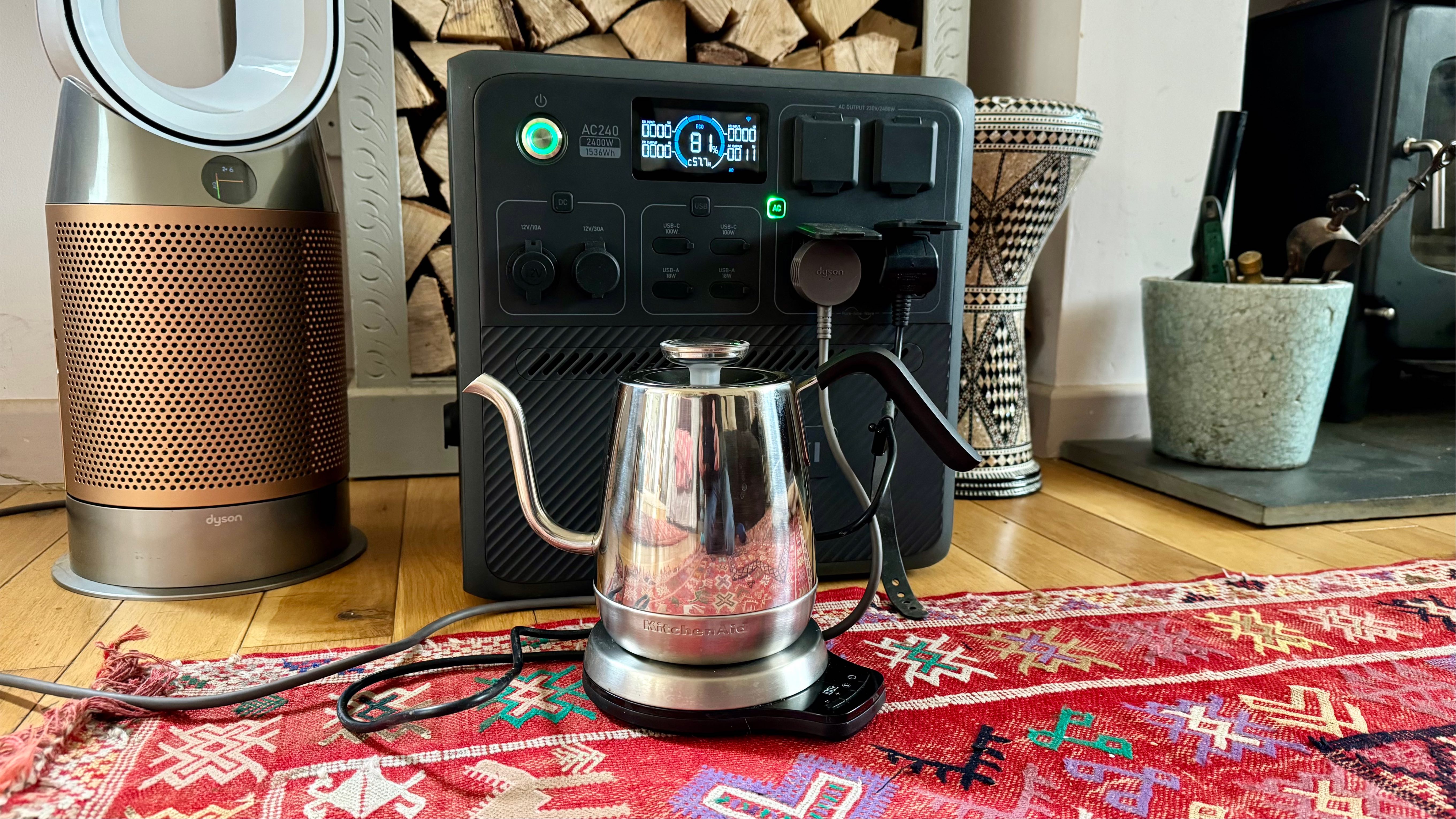
Specifications
Reasons to buy
Reasons to avoid
The Bluetti AC240 Portable Power Station is a powerhouse designed for those who need reliable and substantial energy supply, whether for outdoor adventures, RV trips, or emergency home backup.
With an impressive 2,400W output and a capacity of 1,536 watt-hours, it can handle a wide range of devices, from household appliances to power tools. The inclusion of an IP65 water-resistance rating adds to its appeal, ensuring protection against dust and low-pressure water, making it a robust choice for outdoor use.
The AC240's substantial weight of 33 kilograms and its large dimensions make it less portable than other models in its class. While it features sturdy handles for carrying, the size and weight could be a significant drawback for solo users or those with limited storage space. The device's design also has a few quirks, such as the upside-down positioning of the top AC outlets, which could lead to cable clutter.
Overall, the Bluetti AC240 is an excellent option for those who prioritise power and durability over portability. Its performance, versatility, and water resistance make it a strong contender in the portable power station market, but potential buyers should be prepared to manage its heft and size.
Rear our full Bluetti AC240 review.
Best for camping

Specifications
Reasons to buy
Reasons to avoid
If you can’t decide whether you need a grab-and-go portable battery for weekends away or something more substantial, then the EcoFlow River Max is what you need. Uniquely modular, the River Max has a total of 576Wh yet is essentially a chassis upgrade over EcoFlow’s smaller 288Wh-capable River. Rather neatly, the EcoFlow River Max has two 288Wh batteries inside, one of which can be removed if you need something lighter on occasion.
In either configuration, it’s quick to charge, with EcoFlow’s ‘X-Stream’ using a smart inverter to recharge from 0-80% within an hour and fully charged in just 1.6 hours. You can also increase the AC output to up to 1800W if you need to power a home appliance or DIY tool. Loaded with ins and outs and with a built-in carry handle, cables to charge it while you drive, and the ability to use two 110W solar panels make the EcoFlow River Max an attractive option for short trips off-grid.
Read our full EcoFlow River Max review.
Best for field work
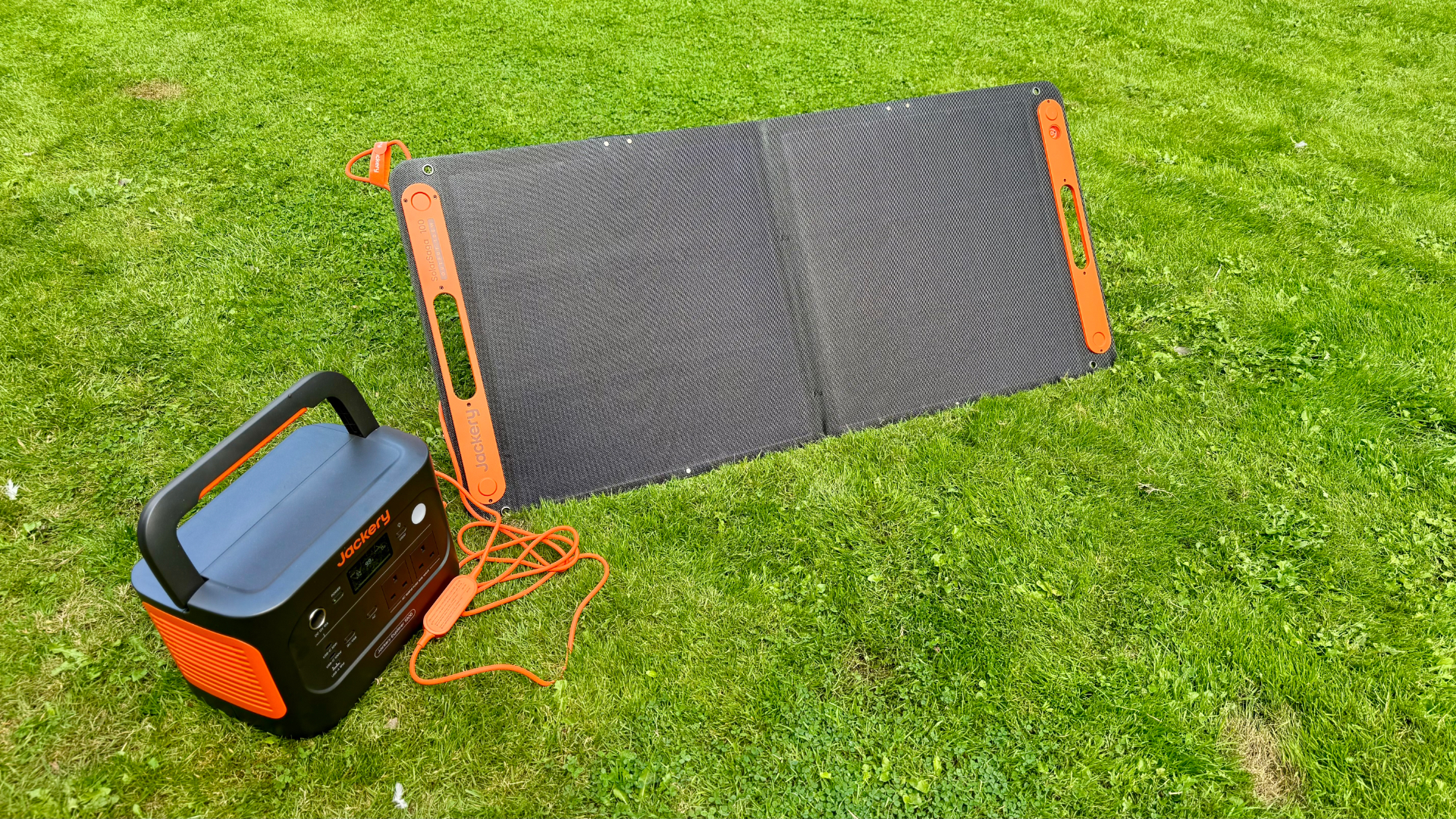
Specifications
Reasons to buy
Reasons to avoid
A compelling combination of power, efficiency, and portability, the Jackery Explorer 1000 v2 is the optimal solution for field professionals seeking dependable energy sources in remote locations.
With a substantial 1,070Wh LiFePO₄ battery and a 1,500W continuous output (peaking at 3,000W), it effortlessly powers a range of equipment, from laptops and cameras to power tools and lighting rigs.
Its versatility is further enhanced by a comprehensive array of ports: three AC outlets, two USB-C ports (including a 100W PD), a USB-A port, and a 12V car outlet, allowing simultaneous charging of multiple devices.
Designed with mobility in mind, the Explorer 1000 v2 weighs approximately 10.8 kg and features a foldable handle, making transportation between job sites straightforward. Its rapid charging capability (achieving a full charge in just 1.7 hours via AC input) ensures minimal downtime.
The unit also incorporates UPS functionality with a swift switchover time of less than 20 milliseconds, safeguarding sensitive equipment during power interruptions.
Read our full Jackery Explorer 1000 v2 review.
Best premium

Specifications
Reasons to buy
Reasons to avoid
Goal Zero’s flagship portable power station is for committed off-gridders and van-lifers. Huge and heavy, it contains a lithium-ion NMC battery rated at a mighty 1,516W hours. It’s a treasure trove of ins and outs, with highlights including two PD USB-C slots (one 60W to recharge a laptop and one 18W Quick Charge to quickly refuel a phone), a 12V cigarette lighter charger and standard AC.
There’s an excellent LCD display that shows you exactly what it’s up to and what charge remains, and there’s even an app that connects over the Yeti 1500X’s own WiFi network. Capable of charging lights or even a fridge, there are a couple of Anderson inputs that can be hooked up to a maximum of 600W solar panels (though you mustn’t exceed 50V), one of which is underneath a flap on the top that also gives you somewhere to store cables neatly. There are two useful handles on either side of the unit, but all that great stuff means the Yeti 1500X is a very heavy product.
Read our full Goal Zero Yeti 1500X review.
Best power management

Specifications
Reasons to buy
Reasons to avoid
The Dabbsson DBS2300 Portable Home Backup Power Station is a solid choice for home power emergencies, thanks to its unique semi-solid-state battery that enhances safety and longevity.
With ample ports and a modular design, the DBS2300 accommodates multiple devices simultaneously and allows for future expansion. Despite its indoor-oriented build and low solar panel efficiency, it impresses with features like an AI-powered management system, intuitive operation, and a robust app interface.
The unit's LCD screen provides comprehensive information, and you can further scrutinise data using the app, which offers convenient control and monitoring options.
While weatherproofing could be improved, its reliable performance and safety features make it a compelling option for those seeking a dependable backup power solution.
Read our full Dabbsson DBS2300 Portable Home Backup Power Station review.
Best budget
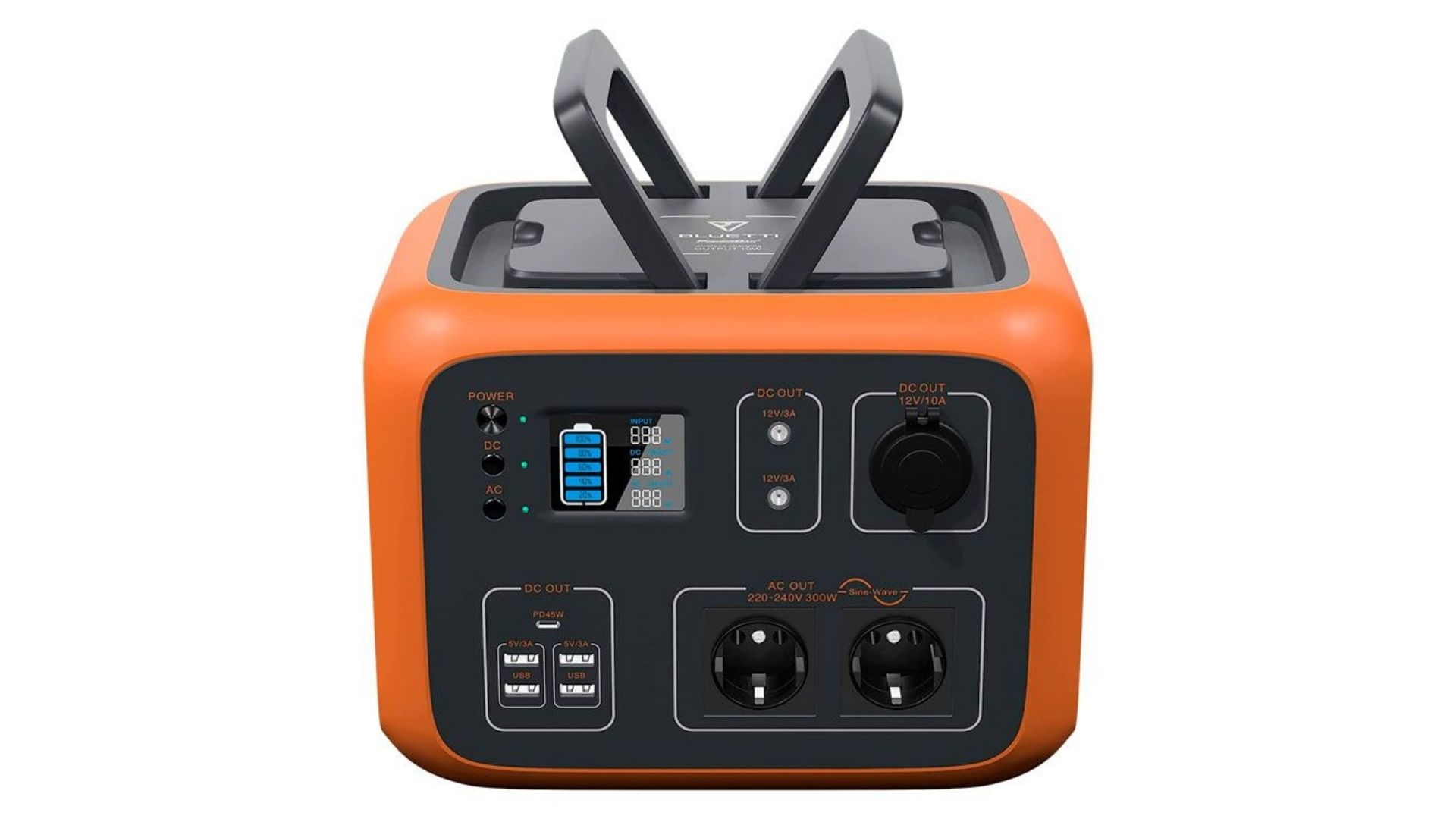
9. Bluetti PowerOak AC50S
Specifications
Reasons to buy
Reasons to avoid
How much power do you actually need? This entry-level portable power station offers 500Wh, which is about 40 recharges of a smartphone and seven recharges of a laptop. If that sounds enough then there’s a lot to like about this pared-down portable battery, which can cope with 11 devices simultaneously. That can include up to four smartphones cabled-up, but an additional device on the top thanks to the PowerOak AC50S’s unusual provision of a wireless charging pad.
There’s also an LED lamp on the rear in case you need some light around camp at night. It takes about five hours to recharge the PowerOak AC50S via a PowerOak SP120 solar panel, a wall socket or via a 12V car outlet, the latter making it perfect for a road trip. As a nice bonus you also get a bunch of cables, though there’s nowhere to store them.
How to choose the best portable power station for you
Portable power stations aren't just bulky batteries; they're the Swiss Army knives of electricity. Need to juice up your laptop with a USB-C PD slot? Piece of cake. Want to plug in your regular wall devices? No sweat. Thinking of going green with solar panels? Well, that depends on the model - some are cooler than others.
Some power stations double as disco balls, thanks to their built-in LED light. And those moulded carry handles? They're like the ergonomic grips on your favourite gaming controller, making it a breeze to go from car boot to campsite.
LED screens that spill the tea on your battery's mood and apps that keep you in the loop—it's like having a personal assistant for your power needs. Just remember, folks, that portability isn't just about size; it's a delicate dance between weight and convenience. So, unless you're cool with wheeling around a mini fridge, choose wisely!
Whether you're rocking UK, US, or EU vibes, there's a power station for you – just make sure you pick the one with the correct outlets.
How we test the best portable power stations
We test the best portable power stations by evaluating their charging capabilities, ensuring they can efficiently refuel various devices, including smartphones and laptops. Compatibility with different plugs, such as USB-C PD slots and Anderson connectors for solar panels, is also assessed.
We scrutinise additional features like built-in LED lights and ergonomic carry handles, which enhance the user experience, especially during camping trips.
We also assess the user interface, focusing on LED screens that display vital information like battery status and charging rates. Smartphone apps, if available, are evaluated for their functionality and convenience in managing the power station remotely.
We analyse the weight and size of each power station to determine their suitability for various travel scenarios, from backpacking adventures to car camping trips.
FAQ
Is it worth getting a portable power station?
Yes, portable power stations are worth it for backup power during emergencies, outdoor activities like camping, and versatility in charging various devices. Advanced features like multiple ports and compatibility with solar panels enhance their convenience. Despite the initial cost, the long-term benefits often outweigh the investment.
What is the difference between a power bank and a portable power station?
The main difference between a power bank and a portable power station lies in their capacity and functionality. Power banks are smaller, designed for charging small devices like smartphones, while portable power stations are larger, capable of powering larger appliances and providing backup power for extended periods, often with multiple output ports and higher capacity batteries.
What will a 1000 watt power station run?
A 1000 watt power station can run various devices depending on their power consumption. It can power smaller devices like smartphones, tablets, laptops, LED lights, fans, and small kitchen appliances such as blenders or coffee makers. However, it may struggle to power larger appliances like refrigerators or microwave ovens for an extended period due to their higher power requirements.
Get all the latest news, reviews, deals and buying guides on gorgeous tech, home and active products from the T3 experts

Matt Kollat is a journalist and content creator who works for T3.com and its magazine counterpart as an Active Editor. His areas of expertise include wearables, drones, fitness equipment, nutrition and outdoor gear. He joined T3 in 2019. His byline appears in several publications, including Techradar and Fit&Well, and more. Matt also collaborated with other content creators (e.g. Garage Gym Reviews) and judged many awards, such as the European Specialist Sports Nutrition Alliance's ESSNawards. When he isn't working out, running or cycling, you'll find him roaming the countryside and trying out new podcasting and content creation equipment.